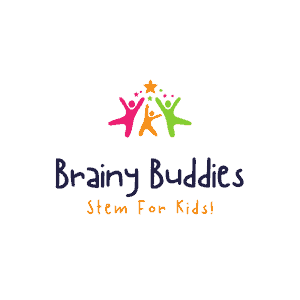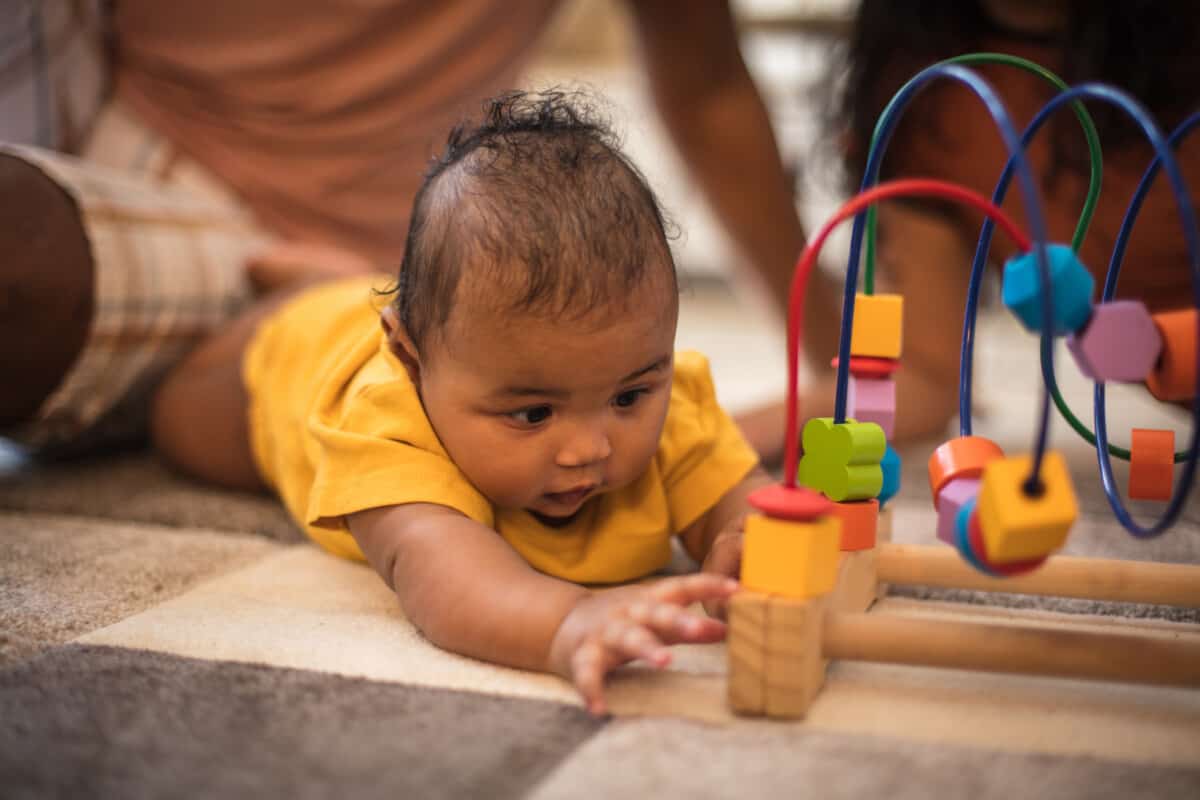Get ready for the tiny revolution in learning as we explore STEM activities for infants – where curiosity rules, and babies emerge as the littlest architects of their cognitive destiny. It’s akin to bringing rocket science to the crib, yet these little minds are more than ready for the challenge!
Why introduce STEM to infants? Early exposure to Science, Technology, Engineering, and Mathematics is like turbocharging their baby brains. Buckle up for the cognitive joyride that paves the way for a future genius or, perhaps, a baby Einstein.
Imagine infants on a mission, armed with simple yet sensory-rich experiences that transform playtime into a cosmic adventure. Witness them unravel scientific principles like budding Einsteins while honing their ninja-level motor skills.
Caregivers and educators, join us on this thrilling journey where STEM transcends mere learning; it’s about sowing the seeds for a lifelong love of discovery. It’s like offering them a head start in the intellectual marathon, minus the tiny sweatbands!
What Are STEM Activities for Infants?
Engaging infants in STEM (Science, Technology, Engineering, and Mathematics) activities is a beautiful way to stimulate their curiosity and promote early learning. Remember that the activities should be age-appropriate and safe with infants and focus on sensory exploration.
18 STEM Activities Perfect for Infants
1. Sensory Bags Exploration

Sensory bags provide a delightful tactile experience for infants. By filling sealable plastic bags with various materials such as colored gel, water, or soft fabrics, caregivers create a safe environment for exploration.
The tightly sealed bags allow infants to squish, squeeze, and observe different textures and colors, promoting sensory development.
2. Mirror Play
Infants naturally draw to their reflections, making mirror play engaging and educational. Placing baby-safe mirrors in front of them encourages visual stimulation and self-awareness.
As infants focus on their reflections, caregivers can introduce colorful toys, enhancing visual engagement and supporting early cognitive development.
3. High-Contrast Cards
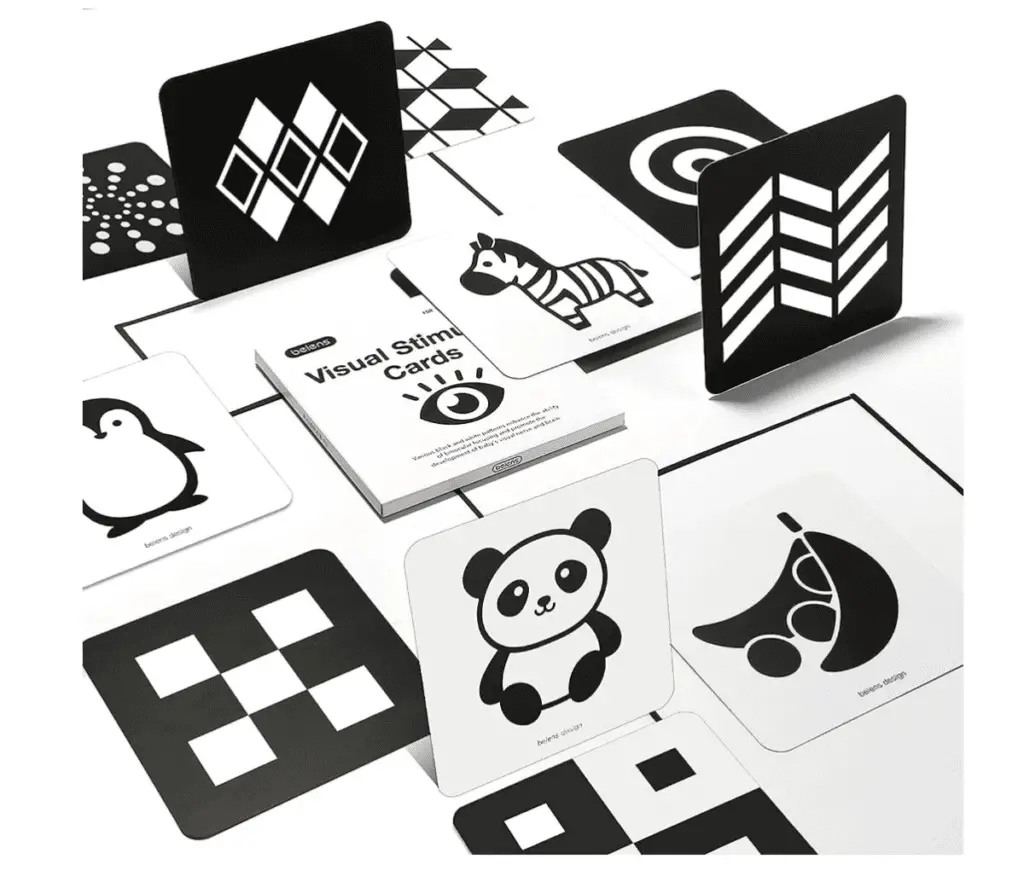
High-contrast cards with bold patterns are a simple yet effective tool for capturing an infant’s attention. Someone can strategically place these visually stimulating cards within an infant’s line of sight to encourage visual tracking skills. The bold patterns provide a captivating visual experience, laying the foundation for future optical and cognitive development.
4. Water Play with Floating Objects
Water play is a delightful way to engage infants in STEM activities. Caregivers can introduce floating objects like rubber ducks or safe waterproof toys in a shallow container.
This activity entertains infants and enhances hand-eye coordination as they reach for and interact with the floating objects. Additionally, it introduces the concept of cause and effect as infants observe the objects’ movements in response to their actions.
5. Nature Walks for Observation
Nature walks provide infants with valuable opportunities for observation and sensory exploration. Caregivers can take infants on short walks to experience simple elements of nature, such as leaves, flowers, or rocks.

This outdoor adventure stimulates the senses, allowing infants to feel different textures, observe vibrant colors, and experience the gentle rustling of leaves. Nature walks contribute to developing infants’ awareness of the environment and provide a foundation for future scientific curiosity.
6. Gentle Sound Exploration with Musical Toys
Musical toys can introduce infants to a world of gentle sounds, fostering auditory and cognitive development. Caregivers can offer a variety of soft and soothing musical toys, encouraging infants to explore the different sounds by shaking, tapping, or pressing buttons.
As they engage with these toys, infants enhance their ability to distinguish between various sounds and begin to understand cause and effect through sound manipulation. This sensory-rich experience contributes to the development of their auditory senses, laying a crucial foundation for language acquisition and communication skills.
7. DIY Sensory Bottles
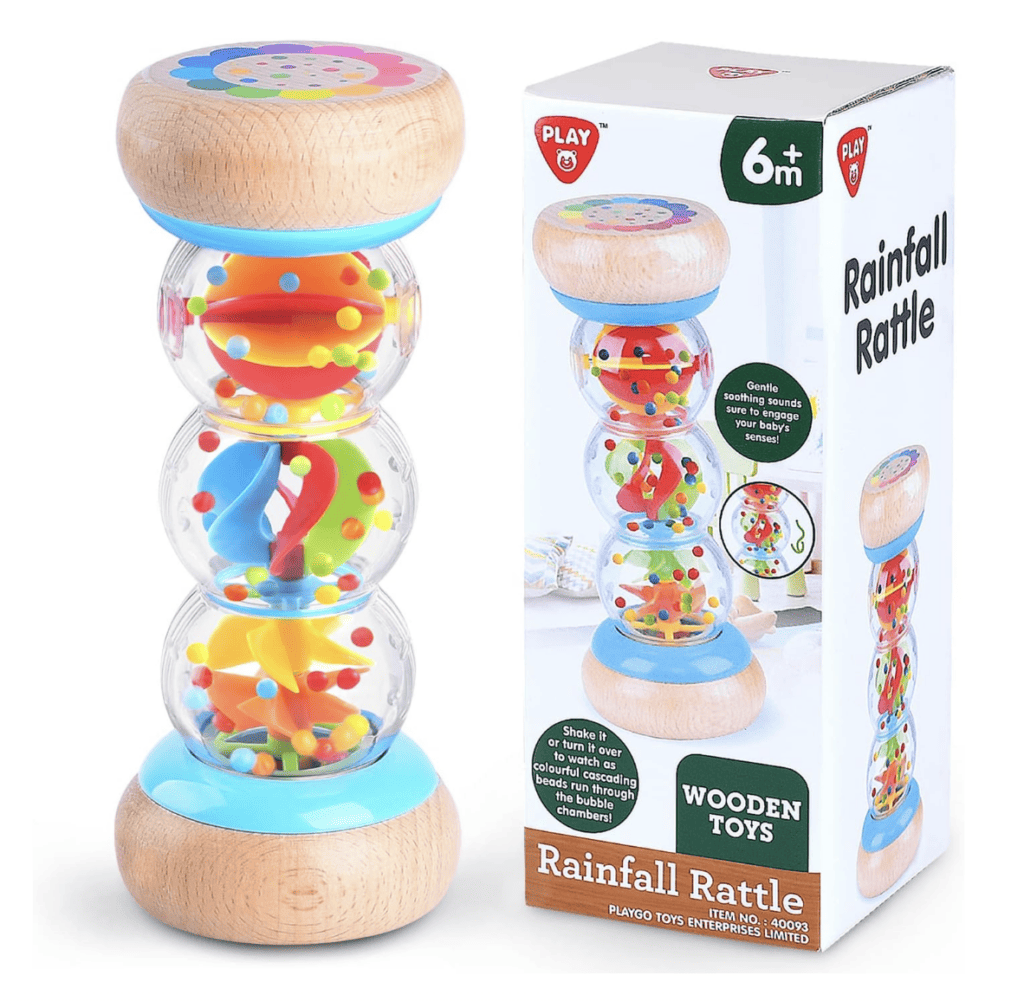
DIY sensory bottles, crafted using clear plastic bottles filled with visually appealing materials such as colored rice, glitter, or small objects, are a captivating and versatile tool for engaging infants in sensory exploration. These bottles offer a mesmerizing visual experience.
Securely sealed, these bottles allow infants to shake or roll them, observing the shifting contents within. This activity stimulates visual tracking as infants focus on the movement inside the bottle, fostering their visual perception and tracking skills.
Additionally, it introduces the concept of object permanence as infants explore the changing contents within the securely sealed container, contributing to their cognitive development.
8. Fabric Texture Boards
Fabric texture boards provide a hands-on approach to sensory exploration, offering infants a diverse tactile experience. Caregivers can create these boards by attaching different fabrics with various textures, such as smooth silk, rough burlap, soft fleece, and bumpy corduroy, onto sturdy boards.
As infants touch and feel these fabric textures, they enhance their sensory awareness and develop a vocabulary for describing different tactile sensations. This activity promotes fine motor skills as infants use their hands to explore and interact with the varied textures.
Through repeated exposure to different fabric textures, infants gradually refine their ability to discriminate between sensations, fostering a more nuanced understanding of the world through their sense of touch.
9. Soft Toy Stacking
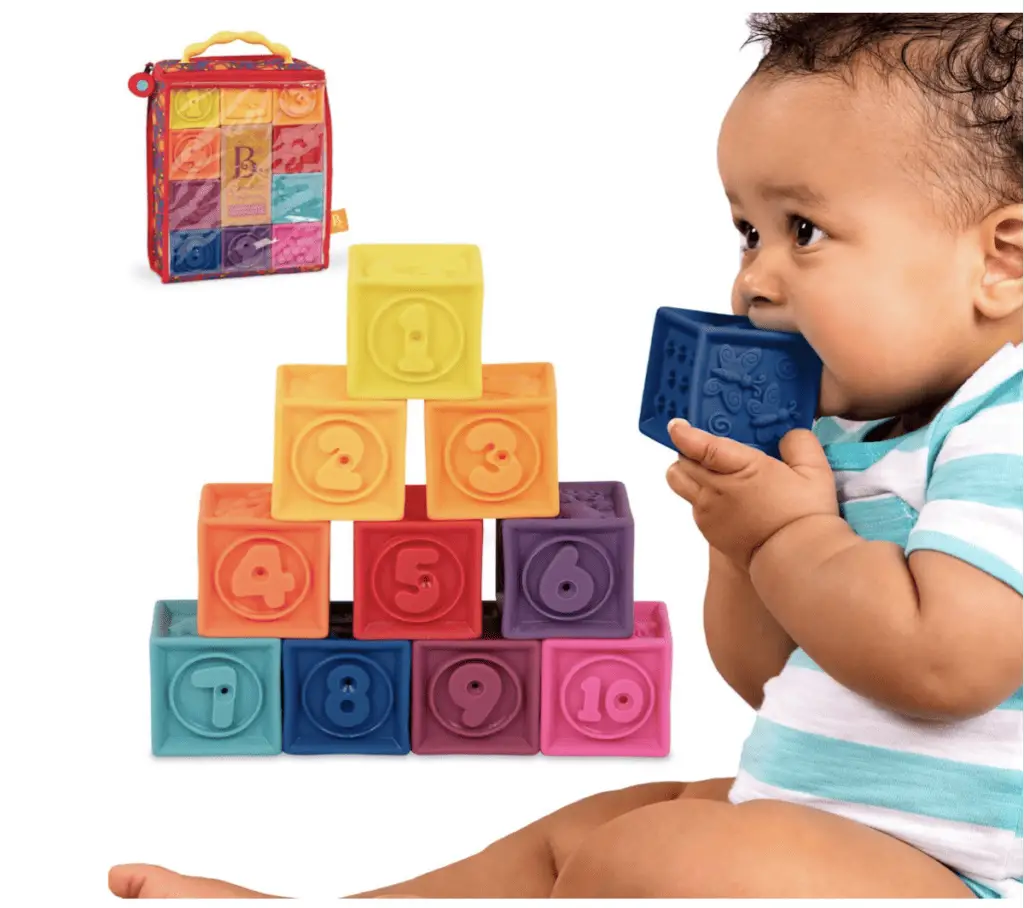
Soft toy stacking is a delightful and educational activity combining playfulness and skill development. Caregivers can introduce infants to soft stacking toys designed for their safety.
Infants are encouraged to explore stacking and nesting these plush toys, providing an excellent opportunity to enhance their fine motor skills and spatial awareness.
As infants grasp, stack, and arrange the soft toys, they develop hand-eye coordination and learn fundamental concepts related to balance and arrangement.
This engaging activity stimulates physical agility and introduces basic engineering principles in a simple and enjoyable manner. Soft toy stacking lays the groundwork for more complex manipulative tasks, fostering cognitive and motor skill development during these formative stages of an infant’s growth.
10. Baby-Friendly Science Experiments
Simplified science experiments designed for infants offer a captivating introduction to the wonders of the scientific world. Caregivers can engage infants in age-appropriate experiments, such as a safe and non-toxic volcano eruption using baking soda and vinegar.
As infants observe the reaction and the ensuing fizz, they begin to grasp fundamental scientific concepts related to chemical reactions and cause-and-effect relationships.
This hands-on exploration sparks curiosity and provides infants with a tangible experience of scientific principles, setting the stage for future scientific inquiry.
The excitement generated by these simple experiments can instill a positive attitude towards learning and discovery, fostering a lifelong interest in the sciences.
11. Soft Ball Roll and Catch
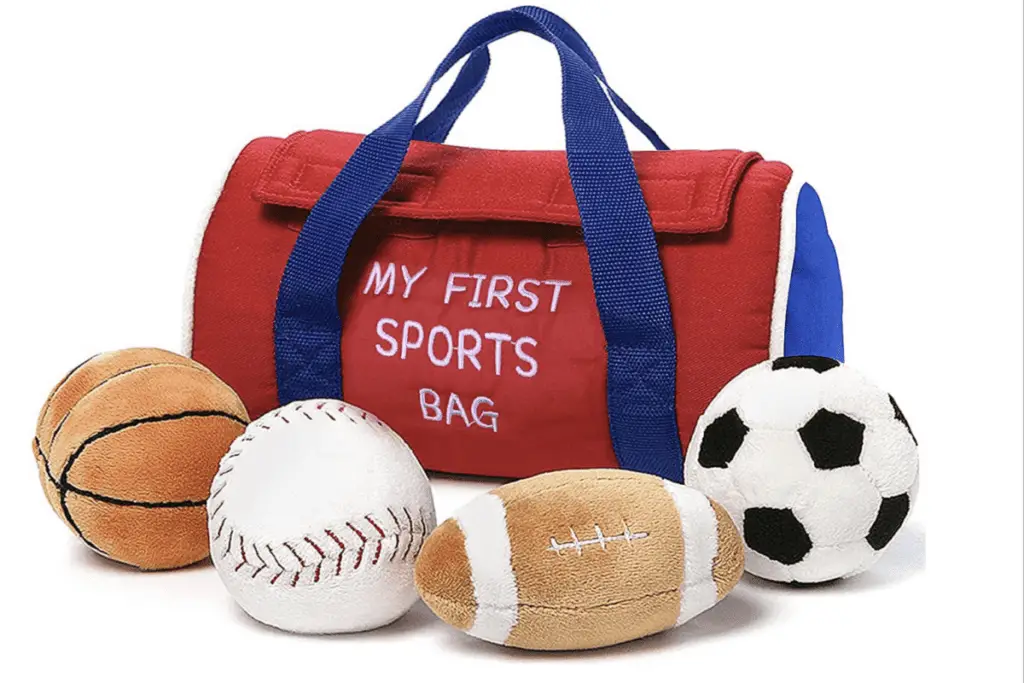
Soft ball roll and catch is a dynamic and interactive gross motor activity that promotes infants’ physical coordination and spatial awareness. Caregivers can introduce soft, lightweight balls suitable for infants’ grasp and encourage them to roll and catch the balls.
As infants engage in this playful activity, they develop hand-eye coordination, refine their reaching and grasping skills, and gain an understanding of basic principles of physics related to object motion.
This activity also encourages social interaction between caregivers and infants, fostering a sense of connection and shared enjoyment. Softball roll and catch contribute to infants’ physical development and provide a joyful opportunity for bonding and exploration within a safe and supportive environment.
12. Colorful Ice Cube Play
Colorful ice cube play is a visually stimulating, temperature-awareness activity that captivates infants’ attention. Caregivers can create vibrant ice cubes by adding safe food coloring to the water and freezing it in baby-friendly molds.
As infants handle these colorful ice cubes, they experience a multi-sensory adventure, feeling the coolness of the ice and observing the gradual melting process. This activity introduces infants to the concept of temperature changes and cause-and-effect relationships as they notice the transformation of solid ice into liquid water.
The blending and changing colors add a layer of visual engagement, stimulating infants’ curiosity and awareness. Colorful ice cube play provides a refreshing sensory experience. It lays the groundwork for understanding basic scientific principles related to states of matter and physical transformations.
13. Exploration with Safe Magnets
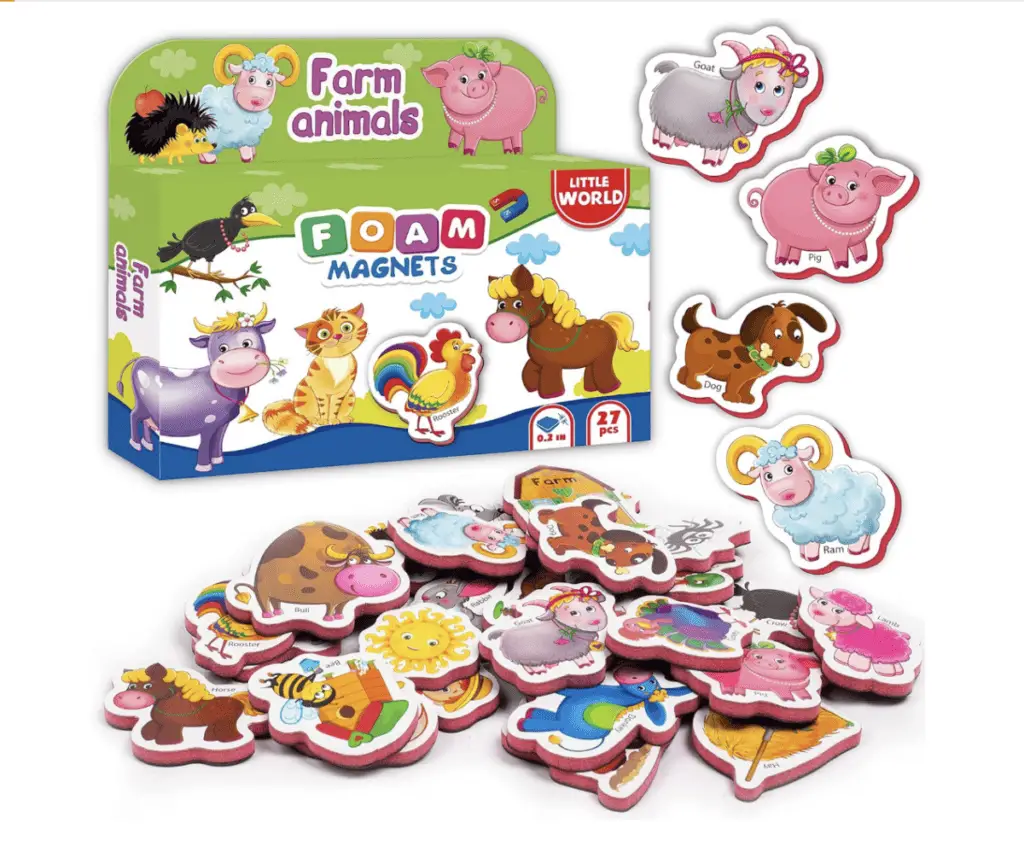
Exploration with safe magnets offers infants an intriguing introduction to the basic principles of physics. Caregivers can give infants large, safe magnets and place magnetic objects within reach.
As infants experiment with attraction and repulsion, they engage in hands-on learning about the unique properties of magnets. This sensory-rich activity captures their curiosity and fosters an early understanding of magnetic forces and interactions.
Through this exploration, infants develop a foundational awareness of the physical world, laying the groundwork for future scientific inquiry. Safe magnet play also promotes fine motor skills as infants manipulate the magnets, enhancing their grasp and coordination.
14. Texture-rich Playdough Exploration
Texture-rich playdough exploration adds an extra layer of sensory engagement to the classic playdough experience. Caregivers can create homemade playdough with various textures, incorporating sand, rice, or small pasta ingredients.
As infants manipulate the playdough, they refine their fine motor skills and explore the diverse sensations provided by the different textures. This hands-on activity stimulates sensory awareness and creativity, encouraging infants to express themselves through tactile play.
15. Simple Light and Shadow Play
Simple light and shadow play captivate infants’ visual senses, introducing them to the magical interplay of light and dark. Caregivers can utilize a flashlight to create shadows on the wall or ceiling using their hands or safe objects.
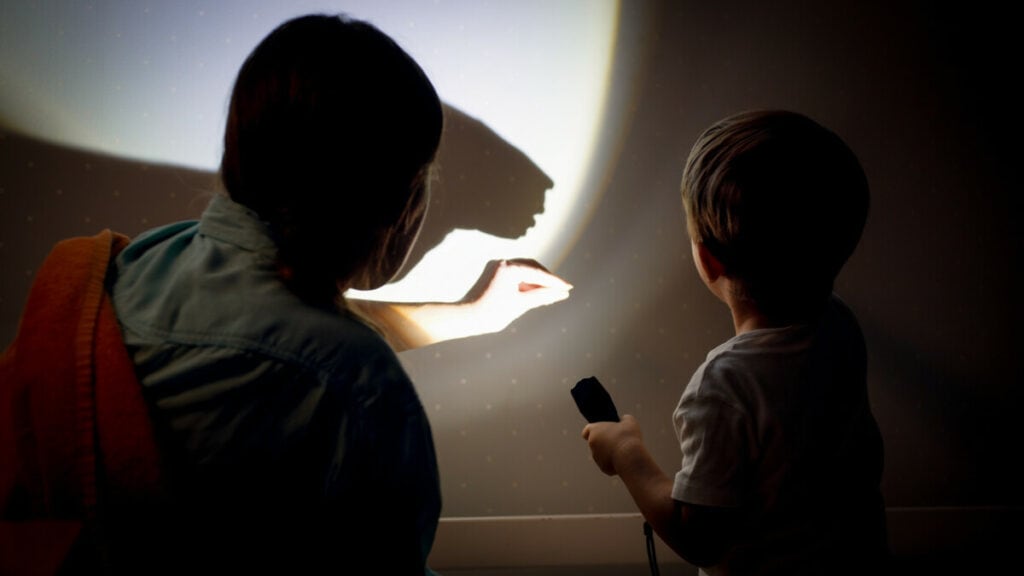
This visual exploration enhances infants’ understanding of light sources, shapes, and spatial relationships. As infants observe the changing forms and movements of the shadows, they develop visual tracking skills and a heightened awareness of their surroundings.
Simple light and shadow play also provide a foundation for early artistic and creative expression, as infants engage in imaginative play with the fascinating shapes created by the interplay of light.
This visually stimulating activity promotes cognitive development and sparks a sense of wonder and curiosity about the world around them.
16. Floating and Sinking Experiment in Water
The floating and sinking experiment in water offers infants a hands-on introduction to basic principles of physics and material properties.
Caregivers can provide various baby-safe objects and let infants observe which ones float and sink in a shallow water container.
This interactive experiment engages infants in critical thinking as they observe and predict the objects’ behavior. Through this activity, infants begin to grasp concepts related to buoyancy and density playfully and tangibly.
The sensory-rich experience of interacting with water adds an extra layer of engagement, making this experiment both educational and enjoyable.
Floating and sinking play contributes to infants’ understanding of the physical world and encourages a sense of curiosity and exploration within a safe and controlled environment.
17. Gross Motor Play with Tunnel Crawling
Gross motor play with tunnel crawling is a dynamic and physically stimulating activity that promotes the development of large muscle groups in infants.

Caregivers can set up a soft and safe tunnel for infants to crawl through, encouraging them to explore movement in different directions. This gross motor activity strengthens infants’ muscles, enhances their coordination, and fosters spatial awareness.
As infants navigate the tunnel, they engage in joyful physical exercise and develop a sense of space and direction.
Gross motor play with tunnel crawling provides a supportive environment for infants to practice and refine their crawling skills, contributing to overall physical development during these formative stages.
18. Baby-Friendly Gardening Experience
The baby-friendly gardening experience is a delightful and sensory-rich activity that connects infants with the natural world. Caregivers can create a small, safe gardening space by allowing infants to explore soil, seeds, and baby-safe plants.
As infants engage in this hands-on activity, they experience the textures of soil, observe the growth of plants, and explore the sensory elements of gardening.
This activity stimulates sensory development and fosters an early appreciation for nature and the environment.
The baby-friendly gardening experience introduces infants to growth and change in living organisms, laying the foundation for future understanding of the natural world.
This interactive and exploratory activity provides a safe and supervised opportunity for infants to connect with nature, contributing to their holistic development and fostering a sense of wonder and curiosity about the world around them.
Wrapping Up
These STEM activities for infants offer a rich tapestry of experiences, fostering holistic development in the crucial early stages of life. Each activity, from sensory exploration to hands-on experiments, is crafted to engage and stimulate young minds.

Caregivers play a pivotal role in creating a nurturing environment that encourages curiosity, imagination, and the joy of discovery. By incorporating these activities into daily routines, caregivers provide infants with a solid foundation for future learning, laying the groundwork for a lifelong love of science, technology, engineering, and mathematics.
These early STEM experiences enrich cognitive development and instill a sense of wonder and exploration in the youngest learners.
